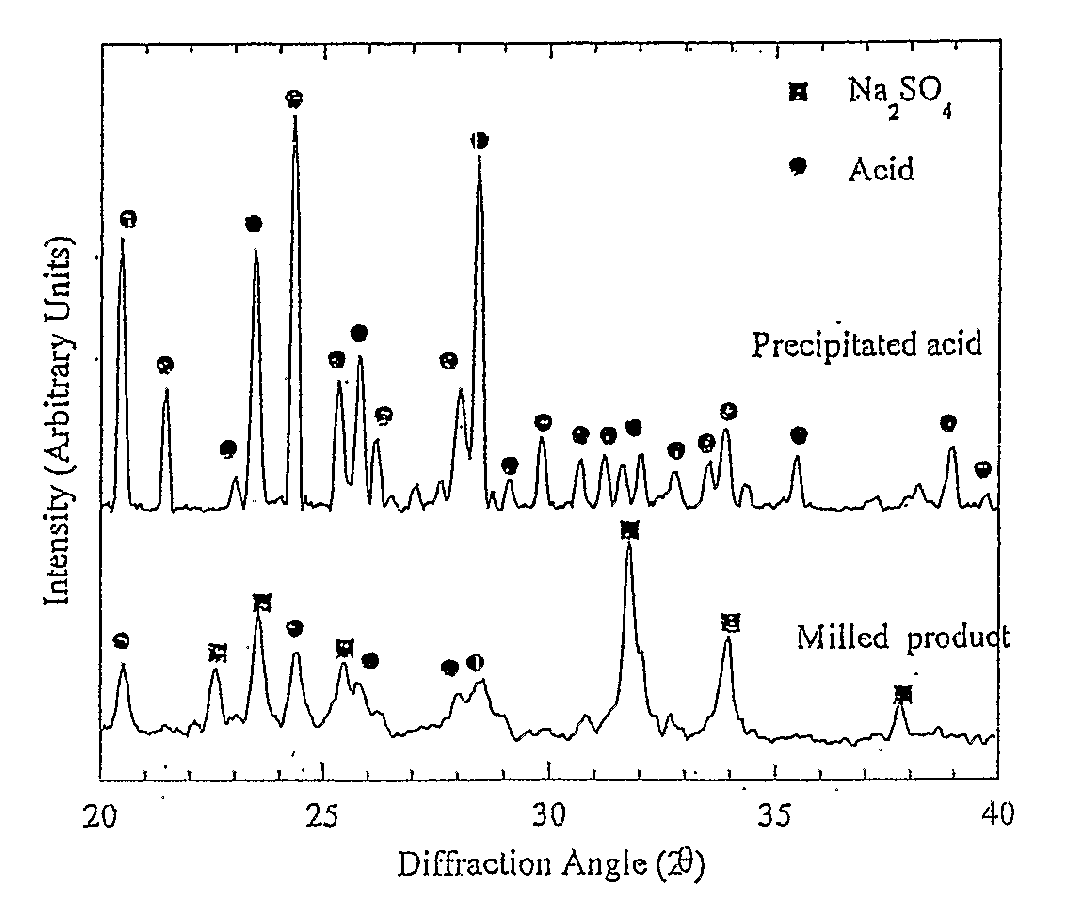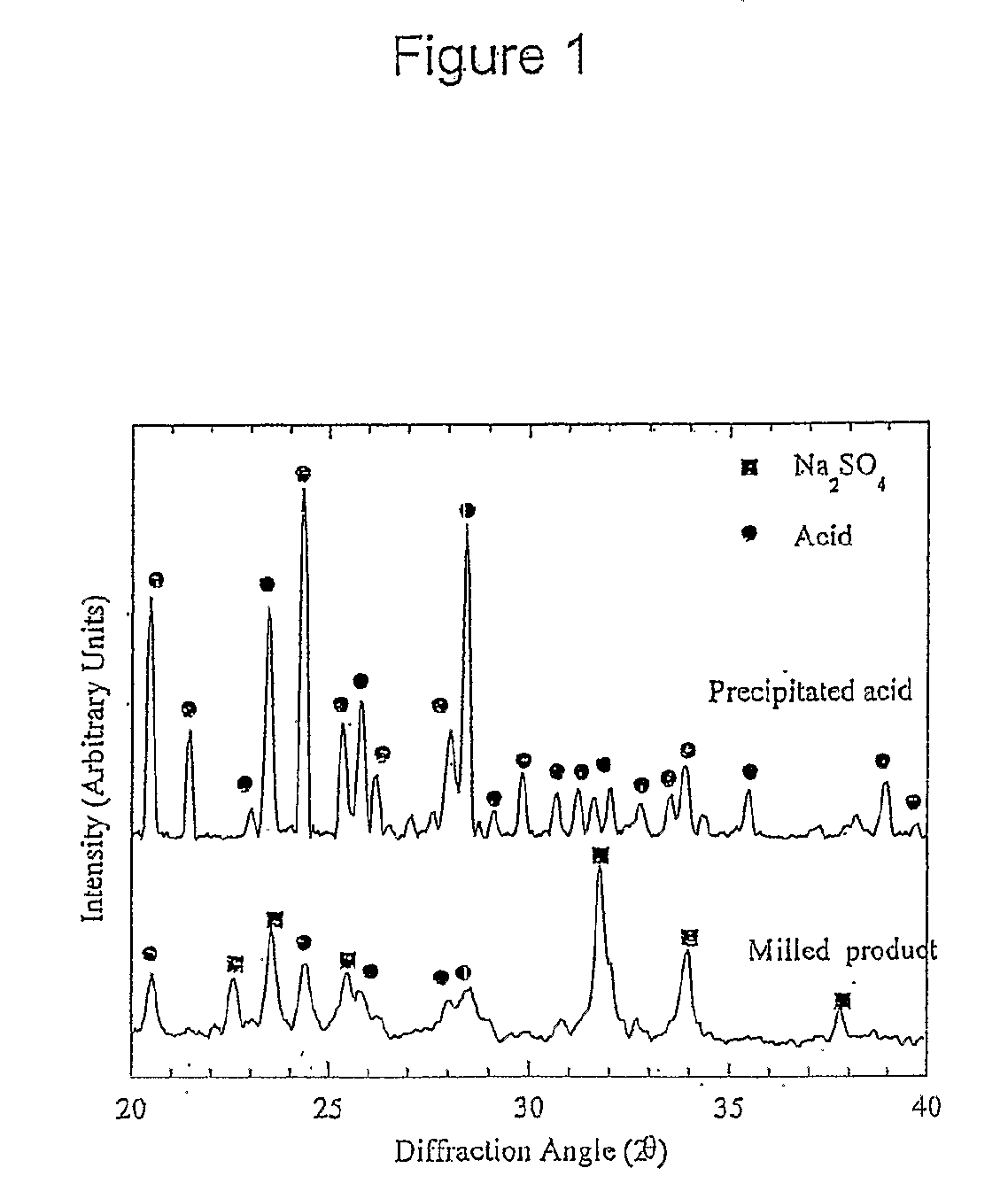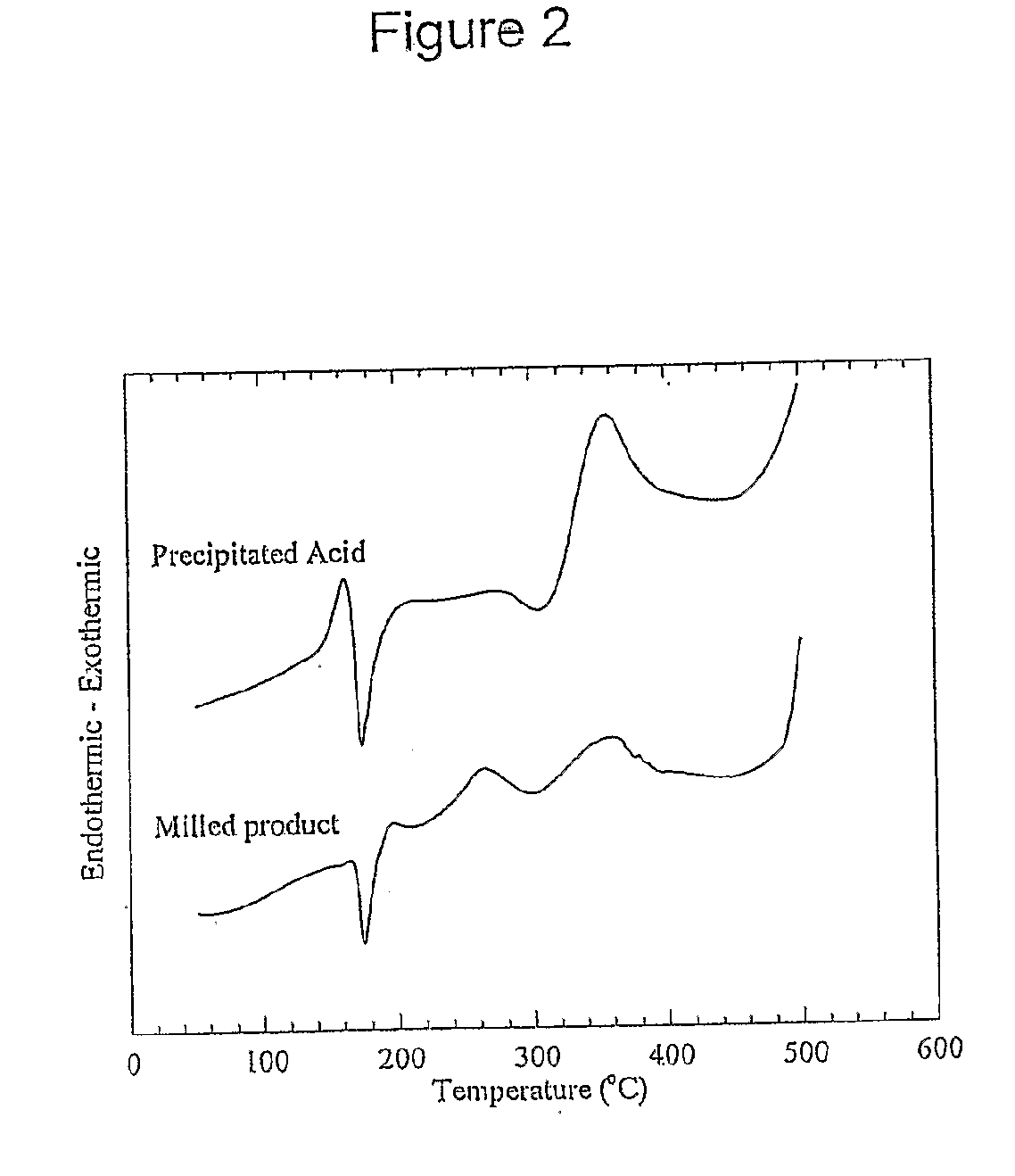Nanoparticle composition and methods of synthesis thereof
a nano-composite microstructure and composition technology, applied in the direction of drug compositions, biocides, peptide/protein ingredients, etc., can solve the problems of poor bioavailability, unsafe intravenous administration of poorly soluble active agents, and poor bioavailability, so as to improve drug bioavailability and improve the effect of nano-composite microstructure compositions
- Summary
- Abstract
- Description
- Claims
- Application Information
AI Technical Summary
Benefits of technology
Problems solved by technology
Method used
Image
Examples
examples
A: Mechanochemical Processing of Diclofenac Sodium with an Excess of Sodium Hydrogen Sulfate
[0157]Mechanochemical processing of diclofenac sodium with an excess of sodium hydrogen sulfate has been used to manufacture ultra-fine (less than 1000 nm) particles of diclofenac acid. In this particular example, the sodium hydrogen sulfate reagent acts as both a chemical reactant and diluent.
[0158]A reactant mixture consisting of 1.00 g of diclofenac sodium and 9.00 g of sodium sulfate was milled for 6 hours using a Spex 8000 mixer / mill with twenty 9.5 mm stainless steel balls as the grinding media. This resulted in the formation of a nano-crystalline powder consisting of ultra-fine diclofenac particles, sodium sulfate, and sodium hydrogen sulfate.
[0159]Ultra-fine particles of diclofenac acid were recovered by removing the inorganic salts through washing with dilute hydrochloric acid followed by rinsing with deionised water. The washed powder was subsequently dried at 50° C. for several hou...
example d
Nanoparticle Composition of Diclofenac Sodium Salt Dispersed in Na2CO3
[0170]A nanoparticle composition of diclofenac sodium salt dispersed in a carrier matrix comprising Na2CO3 was prepared as follows:
[0171]The precursor compound, 0.441 g of conventional diclofenac acid powder,
was placed in a milling apparatus (a 70 cm3 stainless steel ball mill container) with an excess (4.3 g) of the co-reactant, Na2CO3, thereby providing the mixture of reactants at 9 and 91 weight % respectively, corresponding to 15 and 85 volume %, with a total volume of 2 cm3. Milling media comprising 10 g of 10 mm chrome steel balls (10 pieces) were employed in the container. The composition resulting after MCS comprised nanoparticles of diclofenac sodium salt (10.0 wt. %, 16 vol. %),
dispersed in a carrier matrix of Na2CO3 (87.4% wt. %, 81.1 vol. %) and NaHCO3 (2.6 wt. %, 2.9 vol. %).
[0172]Transmission electron microscopy (TEM) of the resulting nanoparticle composition (dispersed in hexane for convenience), s...
example e
Nanoparticle Composition of Diclofenac Acid Dispersed in NH4Cl
[0179]A nanoparticle composition of diclofenac acid dispersed in a carrier matrix comprising NH4Cl was prepared as follows:
[0180]The precursor compound, 0.43 g of conventional diclofenac sodium salt powder,
was placed in a milling apparatus (a 70 cm3 stainless steel ball mill container) with an excess (2.6 g) of the co-reactant, NH4Cl, thereby providing the mixture of reactants at 13.7 and 86.3 weight % respectively, corresponding to 15 and 85 volume %, with a total volume of 2 cm3. Milling media comprising 10 g of 10 mm steel balls (10 pieces) were employed in the container. Some cooling was achieved by allowing compressed air (100 kcpa) to flow over the milling container. The composition resulting after MCS, after only 15 minutes comprised nanoparticles of diclofenac acid (12.9 wt. %, 13.4 vol. %),
dispersed in a carrier matrix comprising NH4Cl (84.7% wt. %, 84.8 vol. %) and NaCl (2.5 wt. %, 1.8 vol. %), with a byproduct ...
PUM
| Property | Measurement | Unit |
|---|---|---|
| Fraction | aaaaa | aaaaa |
| Fraction | aaaaa | aaaaa |
| Fraction | aaaaa | aaaaa |
Abstract
Description
Claims
Application Information
 Login to View More
Login to View More - Generate Ideas
- Intellectual Property
- Life Sciences
- Materials
- Tech Scout
- Unparalleled Data Quality
- Higher Quality Content
- 60% Fewer Hallucinations
Browse by: Latest US Patents, China's latest patents, Technical Efficacy Thesaurus, Application Domain, Technology Topic, Popular Technical Reports.
© 2025 PatSnap. All rights reserved.Legal|Privacy policy|Modern Slavery Act Transparency Statement|Sitemap|About US| Contact US: help@patsnap.com



